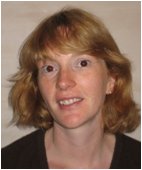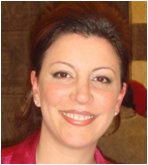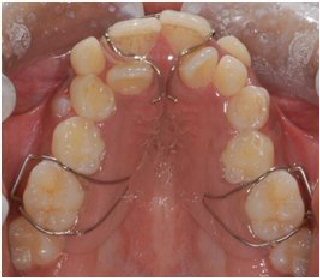Removable Space Maintainers course for Dental Practice



This session examines the concepts of space maintenance in the developing dentition and describes in detail the various types of space removable maintainers available.
Learning Objectives
By the end of this session you will be able to:
- List the principal considerations in the design, fitting and care of removable space maintainers
- State the main advantages and disadvantages of removable space maintainers
- Explain the maintenance and follow up care required
Space maintainers are used to preserve arch length following the premature loss or elective extraction of a tooth. The natural tooth is always the best form of space maintainer, but where a permanent or deciduous tooth is lost early and unwanted effects may result, then a space maintainer should be considered.
Before commencing this session you should:
- Have basic knowledge of the stages of dental development
- Have completed the e-Den session 7 Management of Developing Dentition/Assessment for Interceptive Treatment/Non-orthodontic Interceptive Procedures to Reduce the Severity of Malocclusion
Fiona Dyer BChD (Hons) FDS RCS (Eng) MOrth RCS, MClinDent (Sheffield) FOrth RCS trained at Leeds Dental School and graduated in 1989 with Distinction.
After house jobs and Senior house jobs in Maxillofacial Surgery, she spent 18 months in NHS practice in Bradford. She subsequently completed orthodontic training in 1997 in the South Yorkshire rotations, and Senior Registrar training between Sheffield, Chesterfield and Rotherham.
Fiona was a recipient of the MOrth Gold Medal Prize (1997) and Maurice Berman Prize (2001).
She was appointed as part-time Consultant Orthodontist in Sheffield Teaching Hospitals in 2001, where she is currently the Training Programme Director for Orthodontics South Yorkshire and East Midlands. Since 2008, she has taken up one day per week in NHS orthodontic specialist practice.
She is currently Clinical Sub-editor for the Journal of Orthodontics and involved in two multicentre randomised controlled clinical trials.


Halla Zaitoun graduated with honours from Newcastle Dental School in 2000.
Following vocational training in the Northeast and Senior House Officer posts in Manchester, Halla completed MFDS (2002).
In 2003, she started SpR training in Paediatric dentistry in Liverpool where she attained MPaedDent (2006) and MClinDent (2007). Having completed the last part of FTTA training in Sheffield, she attained ISFE in Nov 2008.
Halla is now working as a fulltime NHS consultant in Paediatric Dentistry at Charles Clifford Dental Hospital in Sheffield.
- Medical and Pharmacology | Human diseases and medi...
- Posted By eIntegrity Healthcare e-Learning
- Posted Date: 2024-11-06
- Location:Online
- This session will describe rheumatoid arthritis (RA), systemic lupus erythaematosus (SLE) and Sjögren’s syndrome. It will also identify the medications used for each condition and consider the impact of each condition on dental care.
- Medical and Pharmacology | Human diseases and medi...
- Posted By eIntegrity Healthcare e-Learning
- Posted Date: 2024-11-06
- Location:Online
- This session provides an overview of some of the clinically important respiratory challenges you may come across as a dental practitioner.
- Medical and Pharmacology | Human diseases and medi...
- Posted By eIntegrity Healthcare e-Learning
- Posted Date: 2024-11-06
- Location:Online
- This session describes the signs and symptoms that may manifest in patients diagnosed with common renal problems and the relevance of common renal disorders to the delivery of dental care.
- Medical and Pharmacology | Human diseases and medi...
- Posted By eIntegrity Healthcare e-Learning
- Posted Date: 2024-11-06
- Location:Online
- This session will look at the relevance of common neurological disorders to the delivery of dental care by the dental practitioner.
- Medical and Pharmacology | Human diseases and medi...
- Posted By eIntegrity Healthcare e-Learning
- Posted Date: 2024-11-06
- Location:Online
- This session will look at the signs and symptoms of neurological disorders and how the dental practitioner may recognise them.






